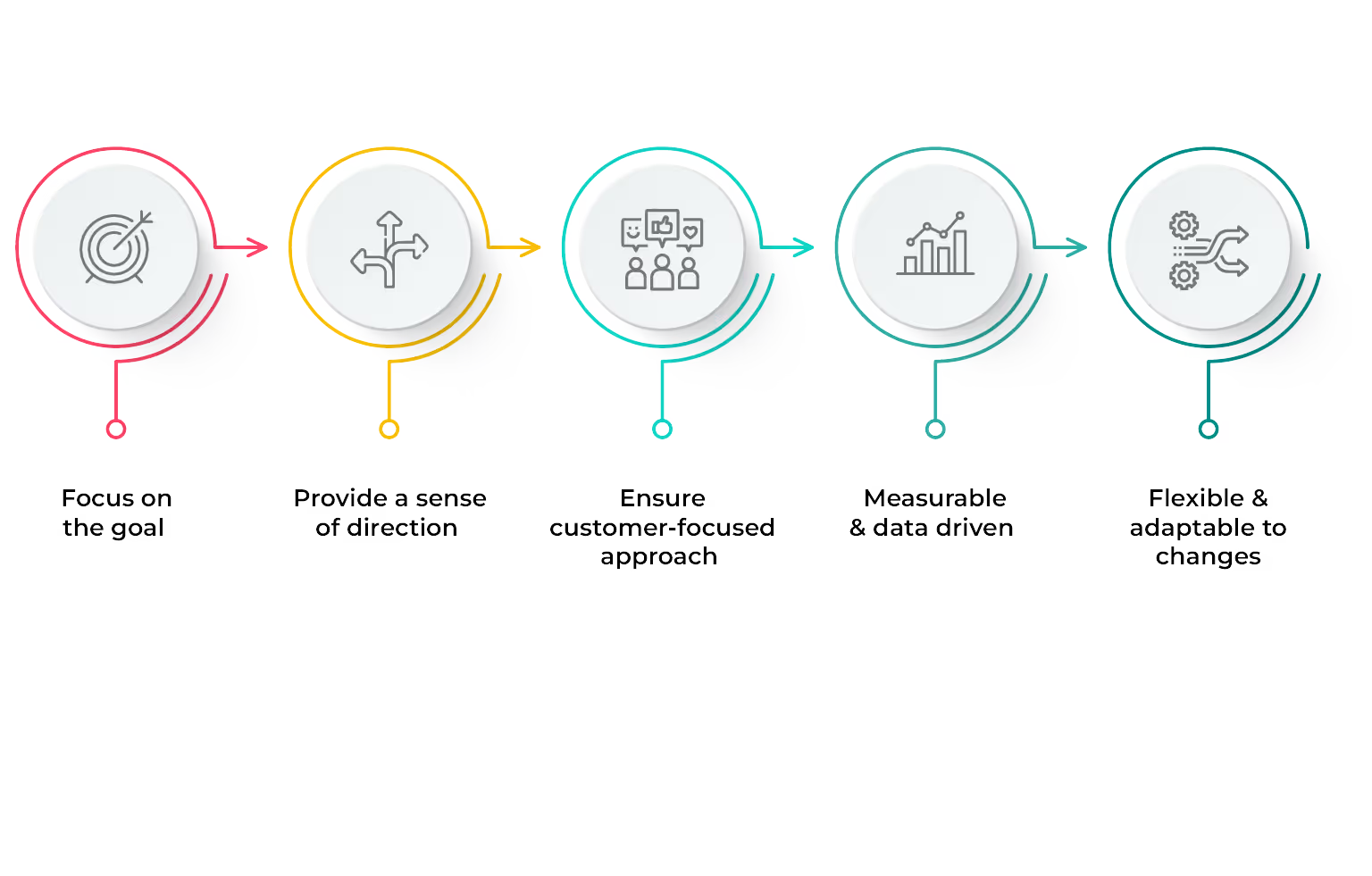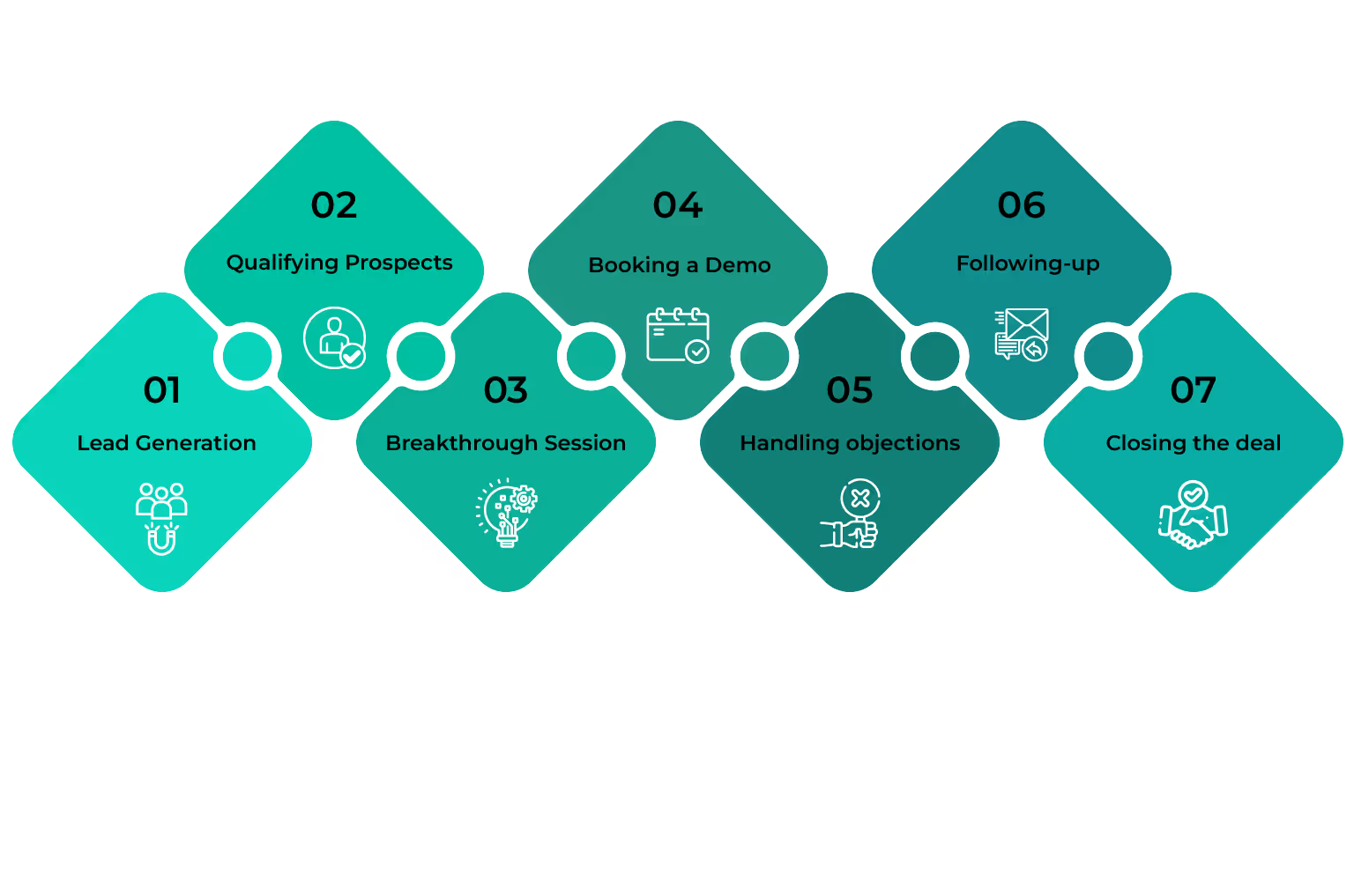
Blog
A Guide to Optimising Sales Performance for the Sales Process
September 18, 2023


Key Insights
How do companies build their sales process?
Gallup in their The CliftonStrengths for Sales Report points out,
You won't find your best sales process by copying some stale "proven framework" or grow your sales skills by mirroring the top salesperson at your organization. That won't do the trick at least, not for long. You need something that's proven to work, starting with your strengths.
This shows that organizations must invest time and effort in understanding their organizational structure and working towards building systems that best suit their operations and bring in positive results. Additionally, incorporating methodologies such as sales MEDDIC can further enhance the effectiveness of the sales process.
But where does one start?
In this article we look at the sales process, trying to understand its meaning, characteristics, and different steps involved in building a successful sales process.
So scroll down for more.
What is a sales process?
Sales process refers to the set of repeated steps that sales reps follow from the start of their journey of reaching out to a prospective customer to closing the sale. Having a structured approach to sales helps the salesforce to maintain quality of work, and uniform standards in the sales pipeline and improve the entire sales journey, ensuring a seamless sales workflow.
Whether you're a novice or a seasoned sales professional, a well-defined sales process with illustrative examples serves as a valuable reference point, integrating sales acronyms like MEDDIC (Metrics, Economic Buyer, Decision Criteria, Decision Process, Identify Pain, Champion) to consistently improve your sales performance and meet your targets.
Hence, building a sales process is crucial for the success of every sales team, as it helps define and optimize sales team roles, ensuring everyone understands their responsibilities and contributes effectively to achieving collective goals.
What are the characteristics of a good sales process?
There is a set of features that define whether the sales process is efficient or not. Here are a few characteristics of a good sales process.

- Focus on the goal
A good sales process will help the salesforce define their goal and guide in how to achieve these targets. It provides a result-oriented approach that helps salespeople focus on their goals and plan their strategies accordingly. Incorporating MEDDPICC sales process or tools like Sales Mix Calculator can further refine the goal-setting process, ensuring a data-driven and effective approach to achieving sales targets.
- Provide a sense of direction
Sales process acts as a roadmap that the salesforce can follow while leading their prospects through the sales pipeline and ensuring the closing of deals. Especially when a salesperson has multiple leads in their pipeline, knowing a systematic approach they can fall back on will help them have a sense of direction and control of the situation, supported by valuable insights from a robust sales pipeline calculator.
- Ensure customer-focused approach
Following a structured and systematic approach that has clearly defined the customer demographics will help the salesforce understand the needs and expectations of their prospects and act accordingly. It is very important in sales to have a customer-focused approach to ensure that your prospects relate to your product and have a necessity to incorporate it into their operations.
- Measurable and data-driven
The purpose of incorporating any tool into your business operations is for data. An efficient sales process, represented visually through a sales process flowchart, will help you measure the effectiveness of your sales initiatives. Quantifying your efforts thus helps in making data-driven informed decisions, thereby optimizing your sales management and business operations.

- Flexible and adaptable to changes
The characteristics of a good sales process are also to be flexible to the changing trends and adapt easily to stay relevant and competent. Especially in a market scenario where everything changes fast, the sales process must be equipped to be scalable and adjust to the market change.
Organizations must look into these features when they set out to build a sales process to boost their sales workflow and operations.
For further read, check Sales Pipeline vs Sales Funnel: Spot the Difference
What are the different steps to designing a sales process?
Understanding the crucial part that the sales process has in optimizing your operations, organizations must put in the time and effort in building an efficient sales process, including defining clear b2b sales pipeline metrics.
Here is a sales process step that you can follow while designing a sales structure for your organization.

- Lead Generation
Generating leads for your sales pipeline is the first step in sales process flow. It is the process of collecting information and contacts of people who can be your potential clients. Your sales funnel must have a good number of leads to ensure that as they go down the funnel you have enough clients to close the required number of deals. Incorporating lead generation projections into your sales and operations planning example can help forecast demand and allocate resources effectively to meet sales targets and customer needs throughout the pipeline.
- Qualifying Prospects
If lead generation is about gathering your prospective clients, qualifying prospects is about categorizing who comes under the demographics of your ideal customer profile. This determination is important to ensure that your efforts reap the fruit of closing a deal and avoid wasting time following people who might not find your product useful.
- Breakthrough Session
Reaching out to your clients and tapping their interests is often seen as hard in sales. Organizations have various ways they initiate their first point of contact. It can be through a cold call, email, LinkedIn message, or any other professional platform where they are active. If the salesforce is successful in getting a response then they can lead them to booking a demo.
- Booking a Demo
It is at this stage that a prospective client first sees your product. But before introducing the product, they try to understand the challenges the client is facing to plan their demo to address these issues. Such an approach makes the demo effective as the client will understand how incorporating your product is an actual requirement and necessity for their operations.
- Negotiating the objections
No client will say a complete yes to your solution. There will always be hurdles in the form of budget, higher authorities, decision-makers, etc. Salesforce must be shown how to negotiate these objections cordially so that the relationship is maintained even when the deal is delayed. The way you handle these situations will help in finding a middle path and ensuring the closing of deals.
- Following-up
Deals take months or years to close. Hence, salespeople must know how to follow up on their prospects and keep their name in their memory without showing themselves as desperate. When prospects tell you to call back after three or six months, salesforce must keep a note of it and follow up at the appointed month to show your consistency in maintaining the relationship and determination to close the deal.
- Closing the deal
Closing the deal is the final stage of a long and patient journey, but a good sales process will always suggest their salesforce to keep in touch with their clients as a part of maintaining the connection. Sales as a service emphasizes that a customer must never be considered merely as a sale for your company but as a relationship for your organization.
For further read on the sales workflow checklist, check The Complete Sales Checklist: Boosting Your Success
Conclusion
Building a structure and system for your business operations will help in keeping track of the work, performance, and productivity.
Especially in sales where each salesperson has a different skill and performance level, an order must be made so that everyone in the team can follow the rules and achieve their goals.
This brings uniformity in sales performance and management ensuring a standard client experience through the pipeline journey.
Kennect helps bring this system into your sales through sales performance management and incentive compensation management.
We build, run, and automate your incentive compensation plans to create transparency and achieve operational efficiency.
For more information, Book A Demo Today.
ReKennect : Stay ahead of the curve!
Subscribe to our bi-weekly newsletter packed with latest trends and insights on incentives.
Thank you! Your submission has been received!
Oops! Something went wrong while submitting the form.
Your data is in safe hands. Check out our Privacy policy for more info















